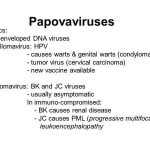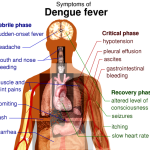
Velpanat – one of the most effective combination drug commonly used to treat all types of HCV infection.

Papillomaviruses (HPVs) cause skin warts, most commonly in children and young adults, which may reflect acquired immunity in older age groups (Box 1). Laryngeal papillomas are found most commonly in young children and middle-aged adults. Genital warts (condylomas) are most common among sexually active patients and are sexually transmitted. Recent studies suggest that genital HPV infections may occur in 20% of females and are associated with cervical dysplasia, neoplasia, or both.

Colorado tick fever, an acute disease characterized by fever, headache, and severe myalgia, was originally described in the nineteenth century and is now believed to be one of the most common tick-borne viral diseases in the United States. Although hundreds of infections occur annually, the exact number is not known because it is not a reportable disease.

Hantaviruses are members of the bunyavirus group, which is the largest family of viruses and contains several human pathogens including California encephalitis virus (see site). The hantavirus group was first recognized as causing hemorrhagic fevers with renal failure in Asia and Eastern Europe but became much more prominent in the United States when the hantavirus pulmonary syndrome was described in the United States. Hantaviruses have been found throughout the world in a variety of rodents and other species.

Two unique RNA viruses, the Marburg and Ebola viruses, are members of a new family known as filoviruses. These agents can cause severe or fatal hemorrhagic fevers and are endemic in Africa. Laboratory workers have been exposed to the Marburg agent while working with tissue cultures from African green monkeys.

Dengue and yellow fever are both caused by flaviviruses, and each is spread by an arthropod vector. The etiologic agents of dengue are the dengue virus types 1-4, whereas yellow fever is caused by the yellow fever virus. Flaviviruses produce a wide range of diseases including hemorrhagic fevers, arthritis, encephalitis, and hepatitis.

Many viruses causing infection of the central nervous system (CNS) are covered in chapters devoted to each type of virus. For example, enteroviruses, the agents most frequently causing meningitis and occasionally encephalitis, are covered in site. The herpes viruses that cause meningitis, encephalitis, or both, especially herpes simplex virus (HSV), varicella-zoster virus (VZV), and Epstein-Barr virus (EBV), are discussed in site.

Creutzfeldt-Jakob disease is a progressive, fatal illness of the central nervous system that is seen most frequently in the sixth and seventh decades of life. The disease is sporadic and found worldwide, with an incidence of disease of 1 case/million people per year. The mode of acquisition is unknown, but a higher incidence of the disease among Israelis of Libyan origin who eat sheep eyeballs has led to speculation that the disease may be transmitted by the ingestion of scrapie-infected tissue.